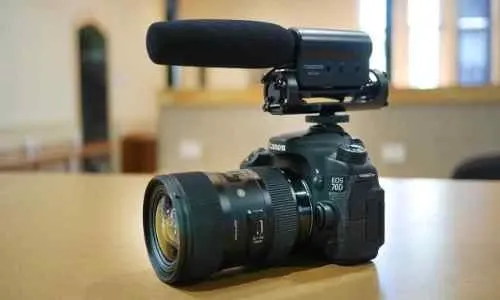



 Tech & IT
Tech & IT
 Business
Business
 Coding & Developer
Coding & Developer
 Finance & Accounting
Finance & Accounting
 Academics
Academics
 Office Applications
Office Applications
 Art & Design
Art & Design
 Marketing
Marketing
 Health & Wellness
Health & Wellness
 Sounds & Music
Sounds & Music
 Lifestyle
Lifestyle
 Photography
Photography
More Learnfly
Business Solution Become an Instructor"Portrait photography is the art of capturing the essence of individuals. Photographers skillfully compose and light their subjects to reveal personality, emotion, and connection. This intimate craft transforms faces into storytelling canvases, creating timeless and emotive images that celebrate the uniqueness of each person."












Learn more topics in various categories at one place. Explore unlimited courses in other categories and up-skill yourself today.

 Jazeb Akram
Jazeb Akram 4.2 771159 Beginner Level

 John Hedengren
John Hedengren 4.1 569062 All Level

 Ranjan Pandey
Ranjan Pandey 4.1 346728 All Level

 Muhammad Ahsan Pervaiz
Muhammad Ahsan Pervaiz 4.2 101337 All Level

 Pieter Vliegenthart
Pieter Vliegenthart 4.6 100916 All Level

 Jerome P.
Jerome P. 4.8 100881 All Level

 Senol Atac
Senol Atac 4.9 100091 All Level

 Vikas Munjal
Vikas Munjal 4.8 100064 Beginner Level

 Avinash A
Avinash A 4.8 100013 All Level

 HARSH VARDHAN Arts
HARSH VARDHAN Arts40 Lectures

 HARSH VARDHAN Arts
HARSH VARDHAN Arts31 Lectures

 Daniela Lambova
Daniela Lambova8 Lectures

 Daniela Lambova
Daniela Lambova11 Lectures

 Matthew Storer
Matthew Storer44 Lectures

 Matthew Storer
Matthew Storer60 Lectures
Portrait photography is a genre of photography focused on capturing the likeness, personality, and mood of an individual or group of people. It involves careful consideration of composition, lighting, and posing to highlight the subject's features and convey a specific narrative or emotion.
Portrait photography is important for its ability to capture and celebrate the uniqueness of individuals. It serves various purposes, including personal and family memories, professional headshots, and artistic expression. Effective portrait photography goes beyond capturing physical appearances, aiming to reveal the subject's character, emotions, and the essence of the moment.
Common components include careful consideration of composition, framing, lighting, and posing. Portrait photographers often use a shallow depth of field to create a pleasing background blur (bokeh) that emphasizes the subject. Controlling lighting, whether natural or artificial, plays a crucial role in highlighting facial features and creating mood in portrait photography.
Learning portrait photography involves understanding composition principles, lighting techniques, and effective communication with subjects. Online tutorials, photography courses, and workshops provide valuable insights into portrait photography. Practicing with willing subjects, experimenting with different lighting setups, and studying the work of renowned portrait photographers contribute to skill development.
While specialized equipment can enhance the quality of portrait photography, it is not always necessary, especially for beginners. Many portrait photographers start with a digital single-lens reflex (DSLR) or mirrorless camera with a standard lens. Understanding basic camera settings, utilizing available natural light, and learning composition techniques are essential components of portrait photography, regardless of the equipment used.






